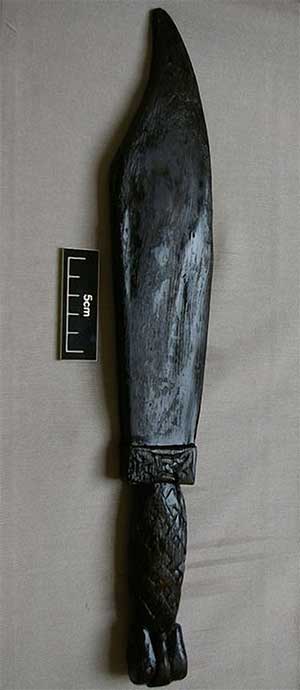BITE-SIZED HISTORY
Published in Issue 1 (January/February 2018), News, Volume 26BY TONY CANAVAN
WHAT LIES BENEATH?
Now that, after four years, Dublin’s Luas Cross City (LCC) project is completed, we can take a step back and consider it. One aspect of the LCC works was that it gave archaeologists an amazing opportunity to explore what lies beneath the streets of Dublin. Teams of archaeologists worked alongside the LCC engineers to examine the excavations carried out as part of laying down the new Luas track. They explored an area from Broombridge in the north to St Stephen’s Green in the south, which was carefully mapped and photographed. One of the most significant finds was the mass grave of victims of the cholera epidemic that spread across Ireland in 1832. About 1,600 of the estimated 5,200 who succumbed in Dublin were buried at the Richmond Penitentiary, Grangegorman. In 1875, during an expansion of the Midland Great Western Railway, the bodies were reinterred in two trenches nearby, where the archaeologists discovered them dumped in heaps. Among other highlights was the discovery of bodies from Tudor times near Trinity College; bricks found beneath O’Connell Street Upper, probably from the brick fields in Moore Street; Broadstone Harbour, a dock built as a cargo terminus for the Royal Canal, lying between 30cm and 7m under a council car park in north Dublin; and even a cache of pikes believed to have belonged to the United Irishmen.
SPAIN’S TROUBLED PAST
Like Ireland, Spain is finding it hard to escape from the consequences of history, and no event is more controversial than the Spanish Civil War. The move to offer guided tours of Pazo de Meirás, the manor in Galicia where General Franco was born, has provoked outrage. In order to keep its status as a protected historic property, the house must offer public tours at least four days a month. The current owners of Pazo de Meirás, Franco’s heirs, asked the Francisco Franco Foundation to conduct the tours. The problem is that the Foundation is dedicated to preserving Franco’s good name and reputation as a statesman. Of course, not everyone sees it like that. His conduct in the Civil War and his subsequent role as dictator of Spain mean that others view him in a very different way. Most mainstream historians regard Franco as a dictator who oversaw a brutal repressive regime, while those on the Left of Spanish politics view him as akin to Hitler. That is why the tours as proposed by the Foundation are causing so much controversy.

Above: The 1,000-year-old Viking weaver’s sword recently discovered at the site of the former Beamish and Crawford brewery in Cork City. (Maurice Hurley)
VIKINGS IN CORK
A 1,000-year-old Viking weaver’s sword was recently discovered by archaeologists at the site of the former Beamish and Crawford brewery in Cork City. The perfectly preserved wooden sword is a little over 30cm long, made entirely from yew, and features carved human faces typical of the Ringerike style of Viking art, which dates it to the late eleventh century. Its quality, however, surpasses similar finds in Dublin and Waterford. It is believed that the sword was used, probably by women, to hammer threads into place on a loom; the pointed end was for picking up the threads for pattern-making. One of the other artefacts found was a wooden thread-winder carved with two horses’ heads, also associated with fabric-weaving. This, along with the discovery of nineteen Viking houses at a site in South Main Street, has led archaeologists and historians to reconsider the extent of Viking settlement in Cork.
IMPERIAL EMBARGO
Archaeologists in Japan are upset with the imperial family because the Imperial Household Agency continues to withhold permission to excavate a series of mounds dating back to a period from the fourth to the seventh centuries. There are an estimated 200,000 of these mounds, known as kofun, which hold the tombs of chieftains and warriors. Many have already been excavated, revealing a rich trove of archaeological material such as mirrors, jade jewels, crowns and weapons. The problem arises because some of these kofun are believed to house the tombs of the ancestors of the present emperor, representing an unbroken line of succession over 2,000 years to the Emperor Jimmu. As such, they are considered sacred in the Shinto religion, and digging into them would be sacrilege. It is hoped that excavation of these tombs would provide clues to the origins of the Japanese and their ruling family. Some say that that is the very reason why permission has been refused—a fear that excavation would expose that the earliest rulers of Japan intermarried with Koreans and Chinese, or may even have been foreigners themselves. This apparently is unacceptable to the imperial family and its adherents.
A TITANIC ACHIEVEMENT
A new hotel on the site of the former Harland & Wolff Drawing Offices and HQ has just opened in Belfast. The luxury Titanic Hotel has 119 rooms and cost £28m, taking two years to restore and renovate the historic Harland & Wolff building. The hotel will employ a staff of 90, including apprentices from Belfast Metropolitan College and students of Ulster University and Galway Mayo Institute of Technology. Sitting right next to Titanic Belfast, the hotel rooms have views of the Harland & Wolff shipyard. Historic features such as the offices of former directors, the Harland & Wolff boardroom, the directors’ entrance and the old lobby have been retained as part of the new design.
















